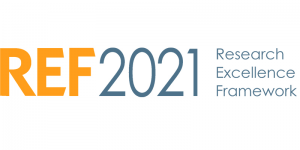The initial set of guidance materials for REF2021 (including guidance on submissions and panel guidelines) was published in July 2018 and consultation with the sector was concluded on 15th October 2018.
The final guidance is due to be published in January 2019, after which time the University will hold a series of briefing meetings through our appointed Unit of Assessment Leads to update colleagues on the key details.
In the meantime, the salient points to take from the latest REF consultation documents on impact case study submission is as follows:
Definition of impact for the REF
For the purposes of the REF, impact is defined as an effect on, change or benefit to the economy, society, culture, public policy or services, health, the environment or quality of life, beyond academia.
Impact includes, but is not limited to, an effect on, change or benefit to:
- the activity, attitude, awareness, behaviour, capacity, opportunity, performance, policy, practice, process or understanding
- of an audience, beneficiary, community, constituency, organisation or individuals
- in any geographic location whether locally, regionally, nationally or internationally
Impact also includes the reduction or prevention of harm, risk, cost or other negative effects.
Impacts will be assessed in terms of their ‘reach and significance’ regardless of the geographic location in which they occurred, whether locally, regionally, nationally or internationally.
**Further guidance about how panels will assess the case studies against the criteria of reach and significance is found separately at www.salford.ac.uk/ref under Impact Evidence Collection.**
Submission requirements
- Each submission must include impact case studies (REF3 template) describing specific impacts that have occurred during the assessment period (1 August 2013 to 31 July 2020) that were underpinned by excellent research undertaken in the submitted unit. The impacts may have been at any stage of development or maturity during this period, so long as some effect, change or benefit meeting the definition of impact took place during that period.
- This may include, for example, impacts at an early stage, or impacts that may have started prior to 1 August 2013 but continued into the period 1 August 2013 to 31 July 2020. Case studies will be assessed in terms of the reach and significance of the impact that occurred only during the period 1 August 2013 to 31 July 2020, and not in terms of any impact prior to this period or potential future or anticipated impact after this period.
- The underpinning research must have been produced by the submitting HEI during the period 1 January 2000 to 31 December 2020. Underpinning research may be a body of work produced over a number of years or may be the output(s) of a particular project. It may be produced by one or more individuals.
- When writing case studies, submitting units should refer to the guidelines for presenting quantitative data set out in the ‘Guidelines for standardising quantitative indicators of impact within REF case studies’. These guidelines have been developed to enable more consistent presentation of quantitative evidence in case studies. This document (and a summary thereof) can be found separately at www.salford.ac.uk/ref under Impact Evidence Collection.
- More than one submitted unit (within the same HEI or in different HEIs) may include the same impact within their respective case studies, so long as each submitted unit produced excellent research that made a distinct and material contribution to the impact.
- Impact case studies continued from examples submitted in 2014 will be eligible for submission in REF 2021 as long as they meet the 2021 eligibility criteria.
Go to www.salford.ac.uk/ref to check out all the latest REF guidance.
